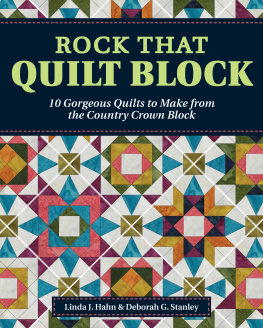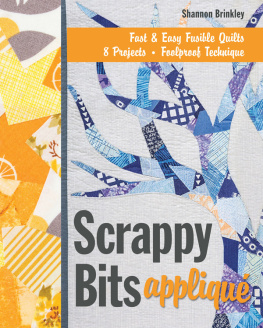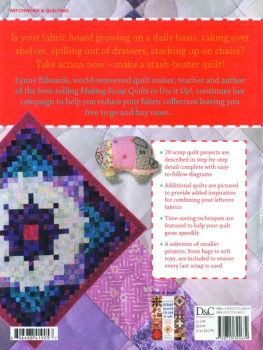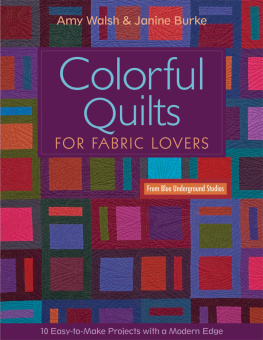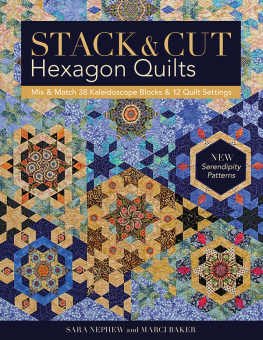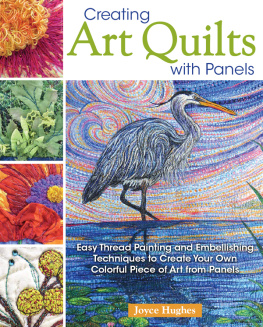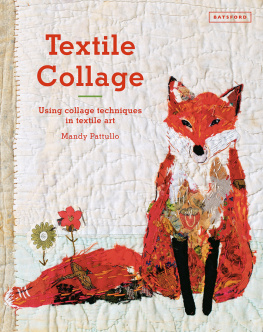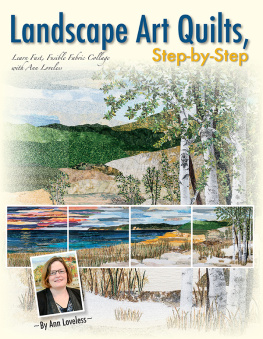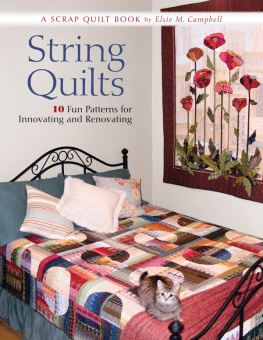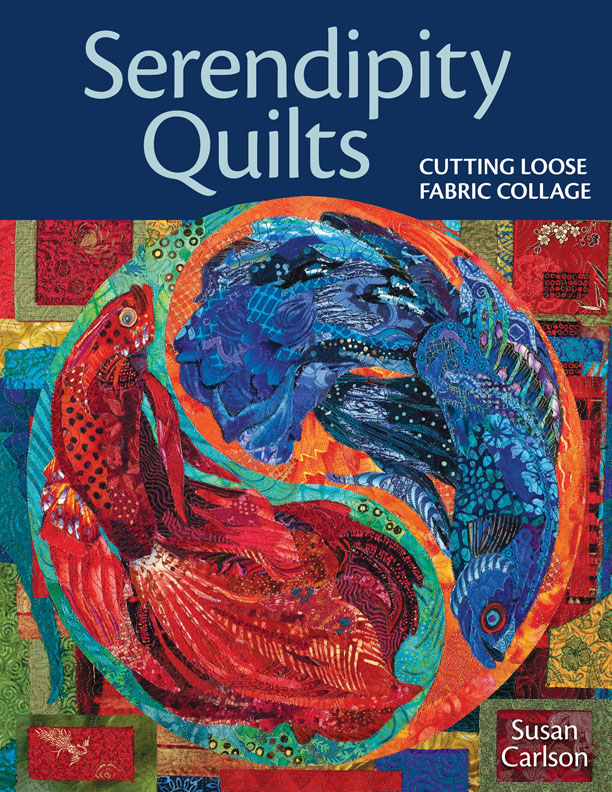
Text, artwork, and illustrations copyright 2010 by Susan Carlson
How-to photography copyright 2010 by C&T Publishing, Inc.
Publisher: Amy Marson
Creative Director: Gailen Runge
Acquisitions Editor: Susanne Woods
Editor: Deb Rowden
Technical Editor: Carolyn Aune
Copyeditor/Proofreader: Wordfirm Inc.
Cover/Page Layout Artist: Kerry Graham
Book Designer: Tom Allen
Production Coordinator: Kirstie L. Pettersen
Production Editor: Julia Cianci
Illustrator: Tom Allen
Photography by Dennis Griggs of Tannery Hill Studios, Topsham, ME, unless otherwise noted
Maine photography by Susan Carlson and Tom Allen
Published by C&T Publishing, Inc., P.O. Box 1456, Lafayette, CA 94549
All rights reserved. No part of this work covered by the copyright hereon may be used in any form or reproduced by any meansgraphic, electronic, or mechanical, including photocopying, recording, taping, or information storage and retrieval systemswithout written permission from the publisher. The copyrights on individual artworks are retained by the artist/author as noted in Serendipity Quilts. These designs may be used to make items only for personal use or donation to nonprofit groups for sale. Each piece of finished merchandise for sale must carry a conspicuous label with the following information: Designs copyright 2010 by Susan Carlson from the book Serendipity Quilts from C&T Publishing, Inc.
Attention Copy Shops: Please note the following exceptionpublisher and author give permission to photocopy for personal use only.
Attention Teachers: C&T Publishing, Inc., encourages you to use this book as a text for teaching. Contact us at 800-284-1114 for more information about the C&T Teachers Program.
We take great care to ensure that the information included in our products is accurate and presented in good faith, but no warranty is provided nor are results guaranteed. Having no control over the choices of materials or procedures used, neither the author nor C&T Publishing, Inc., shall have any liability to any person or entity with respect to any loss or damage caused directly or indirectly by the information contained in this book. For your convenience, we post an up-to-date listing of corrections on our website ( or at P.O. Box 1456, Lafayette, CA 94549.
Trademark () and registered trademark () names are used throughout this book. Rather than use the symbols with every occurrence of a trademark or registered trademark name, we are using the names only in the editorial fashion and to the benefit of the owner, with no intention of infringement.
Library of Congress Cataloging-in-Publication Data
Carlson, Susan E., 1960
Serendipity quilts : cutting loose fabric collage / Susan Carlson.
p. cm.
ISBN 978-1-57120-830-9 (soft cover)
1. Quilting--Patterns. 2. Appliqu--Patterns. I. Title.
TT835.C374123 2010
746.46041--dc22
2009038314
Printed in China
10 9 8 7 6 5 4 3 2 1

To my son, Sam,
who constantly delights and inspires me to cut loose.
Acknowledgments
A thank you to my past and future students for challenging me with your projects and questions. Helping to solve your problems helps me to know what to focus on. Your curiosity and inquiriesHow would you do this? or Is this how you work? inspired both of my books. You have also, knowingly or unknowingly, contributed to my scraps of fabric. Sometimes you gifted them to me, and other times I picked them up off the flooror from the trash pail!after classes. This, even after I told you to save those scraps!
Another huge thank you to my husband, Tom, for his encouragement and expertise in creating this second book. He (usually) understands what I am trying to say and helps me get the right words in the right order. If this book is clear and concise, it is due, in large part, to his editing and design skills.
Contents

Samuelsaurus Rex, 48 40, 2001
Photograph by Andrew Edgar
Introduction

My fierce dino-boy.
About ten years ago, I started writing my first book, Free-Style Quilts: A No-Rules Approach, which documents and describes my work of the previous decade. It presents my experiments in fabric collage, using glue to adhere fabric prior to quilting. The book received a great response and has been a useful tool for teaching the collage process.
However, professional success is not always conducive to creativity. Soon after the books publication in 2000, I started to feel a self-inflicted pressure to make my quilts perfect. Predictably, that took the fun out of the process. I got stuck in a rut. My work was becoming stiff, figuratively speaking. I needed to loosen upeven more than the free-style approach promotes.
Ive played with fabric for much of my lifestitching, manipulating, painting, and drawing on it. Its been experimental and fun. I enjoy looking for new ideas and subject matter. So, I started searching for that spark to add more interest to my work.
For me, fabric collage is an immediate process, similar to painting. I pick up a piece of fabric, cut it to size as I hold it, and lay it down. Sometimes I cut more off or add another piece to make it larger. More and more pieces of fabric are laid in placeone on top of the other. When Im satisfied with how things are looking, I glue the fabric down. When the image is complete, I quilt it for final details and texture. I had always been happy with that way of working, but the resulting images were becoming stagnant to me. So, what to do?
I concluded that if I were a painter and wanted to loosen up my style, I might try an impressionistic approach la Monet and his water lilies. Instead of wide bands of color, I would use smaller strokes of paint, dabs of color placed one next to another. Up close it would look abstract; from a distance it would pull together and form the image I intended.

Tiny pieces of fabric are tossed into old suitcasesmy scrap-cases!

Larger (foldable) cuts of fabric are organized by color on shelves in my design area. Smaller pieces are grouped in baskets or open bins.

My design boarda flannel-covered 4 6 sheet of fiber board clamped onto a rugged drawing table and tilted so I can work at an angleis especially helpful when working with scale and proportion.


